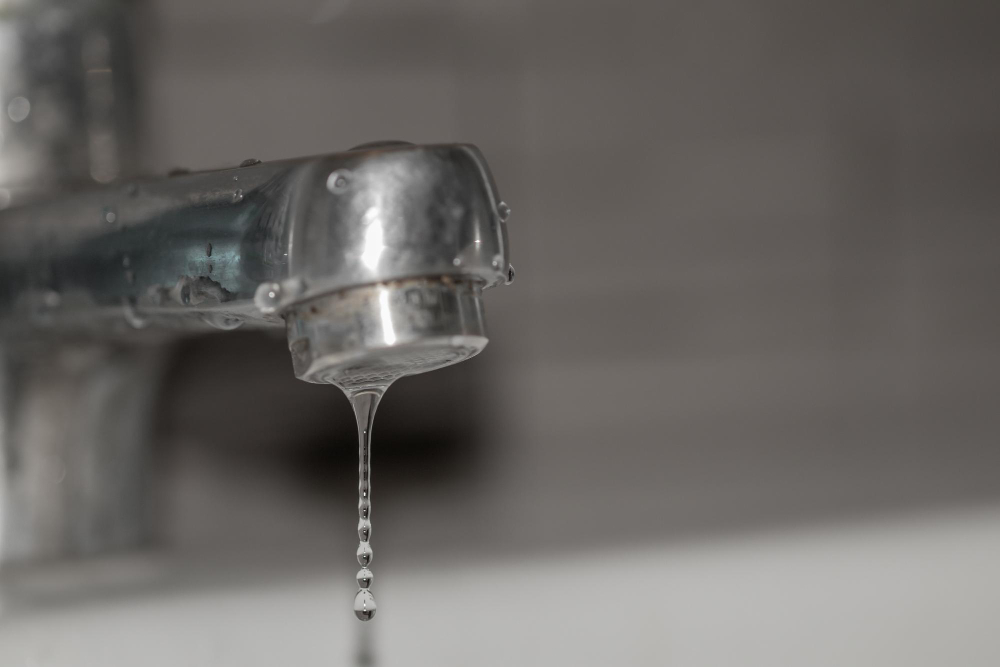A faint dripping sound. A mysterious puddle. A musty smell you can’t quite place. These are the telltale signs of a water leak, a problem that can quickly escalate from a minor nuisance to a major disaster. Ignoring a small leak can lead to skyrocketing water bills, dangerous mold growth, and severe structural damage to your home. Prompt leak detection is a critical part of home maintenance that saves you money and protects your investment.
Ten Most Common Areas to Look for Leaks
1. Toilets
The toilet is one of the most frequent culprits of hidden water leaks, often wasting hundreds of gallons of water silently.
- Diagnostics: Listen for a “ghost flushing” sound—the toilet refilling on its own without being flushed. You can also add a few drops of food coloring to the tank. If the color appears in the bowl within 15 minutes without flushing, you have a leak.
2. Faucets and Sinks
A dripping faucet is more than just an annoyance—it’s money going doit’she drain.
- Diagnostics: Look for obvious drips from the spout, water pooling around the faucet base, or moisture under the sink.
3. Under-Sink Cabinets
The dark, cluttered space under your kitchen or bathroom sink is a prime spot for slow leaks to go unnoticed.
- Diagnostics: Check for musty smells, warped cabinet bottoms, water stains, or damp supplies stored under the sink.
- TIP: Keep the area under your sink clean and uncluttered to make regular visual inspections easier.
4. Showers and Tubs
Because they handle a significant amount of water, showers and tubs provide multiple opportunities for leaks.
- Diagnostics: Look for stained or soft drywall on the other side of the shower wall, loose tiles, peeling paint, or water stains on the ceiling below a second-floor bathroom.
5. Water Heaters
A failing water heater can cause catastrophic flooding. Regular inspection is key.
- Diagnostics: Look for puddles or moisture around the base of the unit, listen for dripping sounds, and inspect the tank for rust or corrosion, particularly near the bottom.
6. Washing Machines
Washing machine leaks are a common and destructive issue. The culprit is often a simple, inexpensive part.
- Diagnostics: Check beneath the machine for puddles of water. Inspect the supply hoses for bulging, cracking, or rust.
7. Dishwashers
A leaky dishwasher can quietly ruin your kitchen flooring and cabinets.
- Diagnostics: Look for water on the floor in front of the dishwasher after a cycle. Check for water stains or warped wood in the cabinet area next to the appliance.
8. Refrigerators with Ice Makers
The ice maker is connected to a water line that can become a source of slow, damaging leaks.
- Diagnostics: A puddle under or behind the fridge is the most obvious sign. If you have a wood floor, look for dark stains appearing or buckling of the floor.
9. Roofs and Attics
Leaks from the top of your house can be tricky to pinpoint and can cause extensive damage before they reveal themselves inside the home.
- Diagnostics: After a heavy rain, inspect your attic for damp insulation, water stains on the underside of the roof decking, or a musty smell. Inside the house, look for discoloration or bubbling on ceilings.
10. Basements and Crawl Spaces
The lowest point in your home is naturally susceptible to water intrusion, both from internal plumbing and external sources.
- Diagnostics: Look for damp walls, puddles on the floor, a musty “damp earth” smell, or white, chalky residue on concrete walls.
Your Leak Detection Checklist and Next Steps
Proactive leak detection is the best way to protect your home. Use this simple checklist monthly or seasonally:
- Inspect under all sinks for moisture.
- Look for water stains on ceilings and around the base of toilets and tubs.
- Check appliance hoses (washing machine and dishwasher) for cracks or bulges.
- Listen for dripping sounds or running toilets.
- Examine your water heater for signs of rust or leaks.
- Read your water meter before and after two hours of no water use to check for hidden leaks.
By regularly checking these ten common problem areas, you can catch water leaks early.


 Facebook
Facebook
 X
X
 Pinterest
Pinterest
 Copy Link
Copy Link


